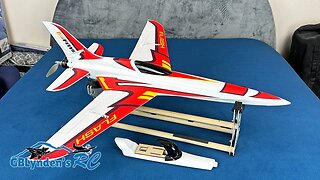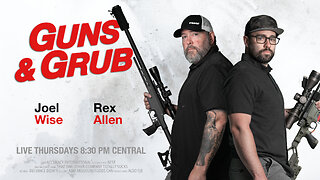Giant Scale Piper Cub RC Plane Loses Wheel in Flight at Warbirds Over Whatcom
This video shows that you have to be ready at any moment because anything, including landing gear can fail at any time.
Link to similar RC Planes: https://bit.ly/3Uio952
The links in this description are affiliate links. They give me a small commission on sales which helps support the channel and keep it independent: https://www.amazon.com/shop/gblyndensrc
Visit https://www.gblynden.com/ to learn more about the hobby!
RC Accessories:
- Spektrum Smart Checker: https://bit.ly/329hl12
- Spektrum IX20 Radio: https://amzn.to/3qFTbHe
- Spektrum AR620 Receiver: https://bit.ly/3Aay021
Other Fun RC Planes:
- Arrows Husky 1800mm PNP STOL RC Plane: https://bit.ly/3v3qQM9
- Arrows BAe Hawk EDF Jet: https://bit.ly/2VY0HB7
- Arrows T-33 EDF Jet: https://bit.ly/3h3Z24a
- Arrows F-86 EDF Jet: https://bit.ly/3hIli3C
- Arrows F-15 EDF Jet: https://bit.ly/3Cxi10D
- Arrows RC MiG-29 EDF Jet: https://bit.ly/2ZDmjBY
- Arrows RC Marlin EDF Jet: https://bit.ly/2LUe4cN
- Arrows T-28 Trojan RC Warbird: https://bit.ly/2LOr3N4
- Arrows Bigfoot RC Plane: https://bit.ly/2TJliVh
The pilot flying this Giant Scale Piper Cub RC Plane is named Mike. Him and his dad saved the day in a lot of ways. It was pretty windy, which kept a lot of guys who had put many hours into building their beautiful Warbirds grounded.
The videos I have uploaded so far with their planes include the Giant Scale Top Flite North American B-25 Mitchell WWII Bomber, Giant Scale F4U Corsair that had its retracts fail, and many other I have yet to upload, but will soon. Those include the Giant Scale de Havilland Tiger Moth along with the Fokker Dr.I Triplane. That is one of the planes the Red Baron was known for flying in WWI.
I didn't meet the pilot flying the electric de Havilland Mosquito RC Plane also seen in the video, but I have some more footage of him that I plan to upload soon of that beautiful plane.
This was a really fun day and this flight was just one of many exciting things I caught on video that day!
Here is some history on this plane:
"The Cub was originally intended as a trainer, and saw great popularity in this role and as a general aviation aircraft. Due to its performance, it was well suited a variety of military uses such as reconnaissance, liaison and ground control, and was produced in large numbers during the Second World War as the L-4 Grasshopper. Large numbers of J-3 Cubs are still flying today. Notably Cubs are highly prized as bush aircraft.
The Cub is a high-wing strut-braced monoplane with a large area rectangular wing. It is powered by an air-cooled piston engine driving a fixed pitch propeller. Its fuselage is a wlded steel frame covered in fabric, seating two people in tandem.
The aircraft's standard chrome yellow paint has come to be known as “Cub Yellow” or "Lock Haven Yellow".
The Taylor E-2 Cub first appeared in 1930, built by Taylor Aircraft in Bradford, Pennsylvania. Sponsored by William T. Piper, a Bradford industrialist and investor, the affordable E-2 was meant to encourage greater interest in aviation. Later in 1930, the company went bankrupt, with Piper buying the assets but keeping founder C. Gilbert Taylor on as president. In 1936, an earlier Cub was altered by employee Walter Jamouneau to become the J-2 while Taylor was on sick leave. (The coincidence led some to believe that the "J" stood for Jamouneau, while aviation historian Peter Bowers concluded that the letter simply followed the E, F, G, and H models, with the I omitted because it could be mistaken for the numeral one.).[3][4] When he saw the redesign, Taylor was so incensed that he fired Jamouneau. Piper, however, had encouraged Jamouneau's changes, and hired him back. Piper then bought Taylor's share in the company, paying him US$250 per month for three years. [5]
Although sales were initially slow, about 1,200 J-2s were produced before a fire in the Piper factory ended its production in 1938. After Piper moved his company from Bradford to Lock Haven, the J-3, which featured further changes by Jamouneau, replaced the J-2. The changes mostly amounted to integrating the vertical fin of the tail into the rear fuselage structure and covering it simultaneously with each of the fuselage's sides, changing the rearmost side window's shape to a smoothly curved half-oval outline, and placing a true steerable tailwheel at the rear end of the J-2's leaf spring-style tailskid, linked for its steering function to the lower end of the rudder with springs and lightweight chains to either end of a double-ended rudder control horn. Powered by a 40 hp (30 kW) engine, in 1938, it sold for just over $1,000.[6]"
-
 5:03
5:03
GBLynden's RC
8 months ago112MPH FMS Flash 850mm RC Speed Plane | Unboxing & Overview
105 -
 2:15:48
2:15:48
Laura Loomer
6 hours agoEP52: THE GREAT REPLACEMENT: Trump and Biden Spar Over Border Policies Ahead of First Presidential Debate
41.8K27 -
 1:29:23
1:29:23
Kim Iversen
7 hours agoJournalists Critical of Israel Fired and Threatened With Arrest! | What Is “Scholasticide” In Palestine?
59.8K87 -
 2:01:58
2:01:58
Melonie Mac
8 hours agoGo Boom Live Ep 6
38K13 -
 1:21:32
1:21:32
Game On!
6 hours agoStanley Cup Finals: Oilers vs Panthers Series Preview
32.2K4 -
 1:15:28
1:15:28
Precision Rifle Network
1 day agoGuns & Grub S2E7
30.7K6 -
 2:23:00
2:23:00
Donald Trump Jr.
13 hours agoLIVE WITH RUSSELL BRAND | TRIGGERED Ep.143
154K205 -
 1:19:17
1:19:17
Glenn Greenwald
9 hours agoSteve Bannon's Contempt Charges Reveal Historic Double Standard; Interview with RFK Jr.'s Running Mate Nicole Shanahan on the 2024 Election and More | SYSTEM UPDATE #278
74.7K169 -
 1:02:52
1:02:52
The Late Kick with Josh Pate
10 hours agoLate Kick Live Ep 519: CFB’s Biggest ?s | Hall-Of-Fame Broken | Deion Expectations | Bold Predictions
27.3K2 -
 59:54
59:54
The StoneZONE with Roger Stone
8 hours agoThe 2024 GOP National Platform Will Be Donald Trump's - w/ Ed Martin | The StoneZONE w/ Roger Stone
34K1